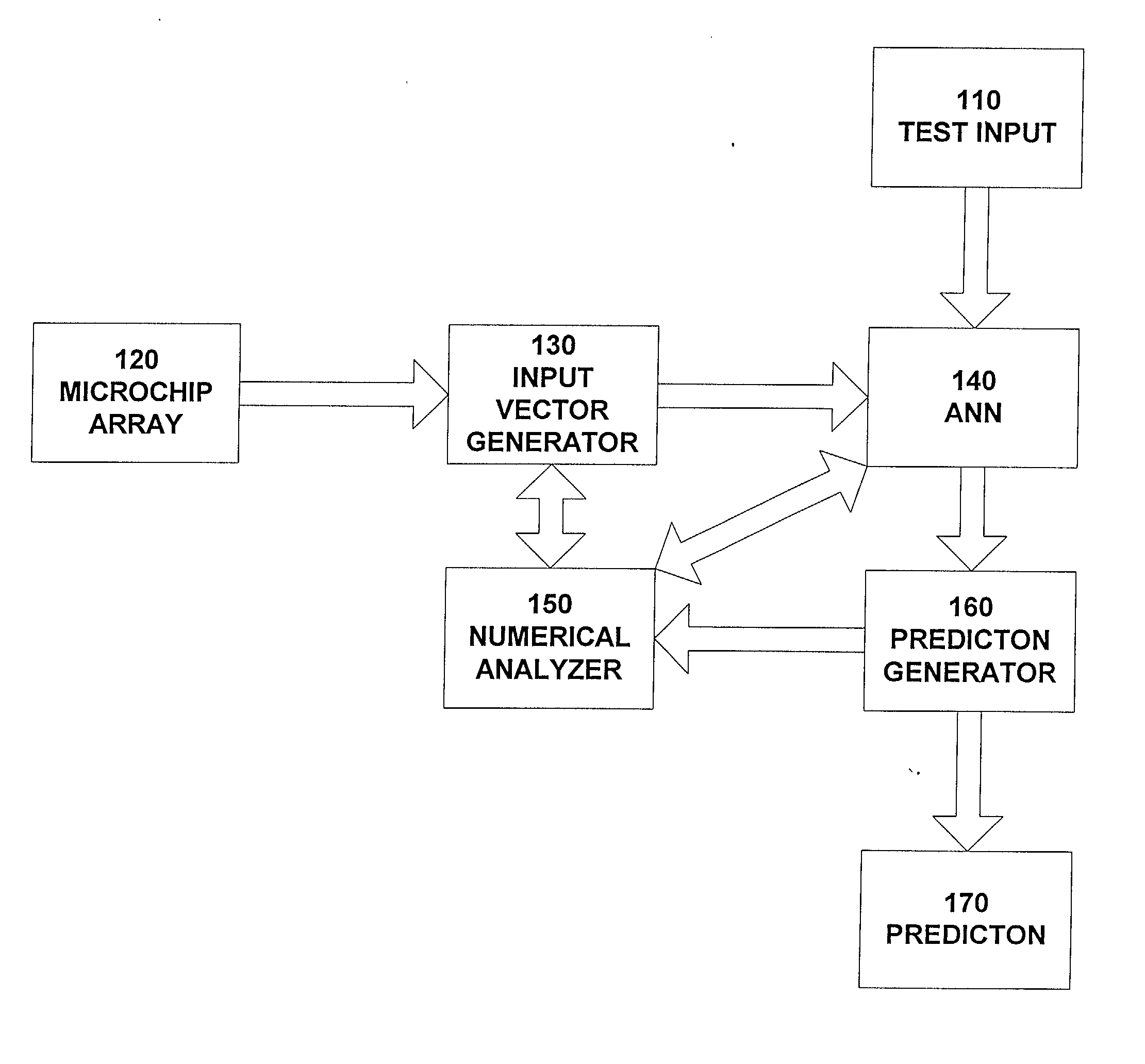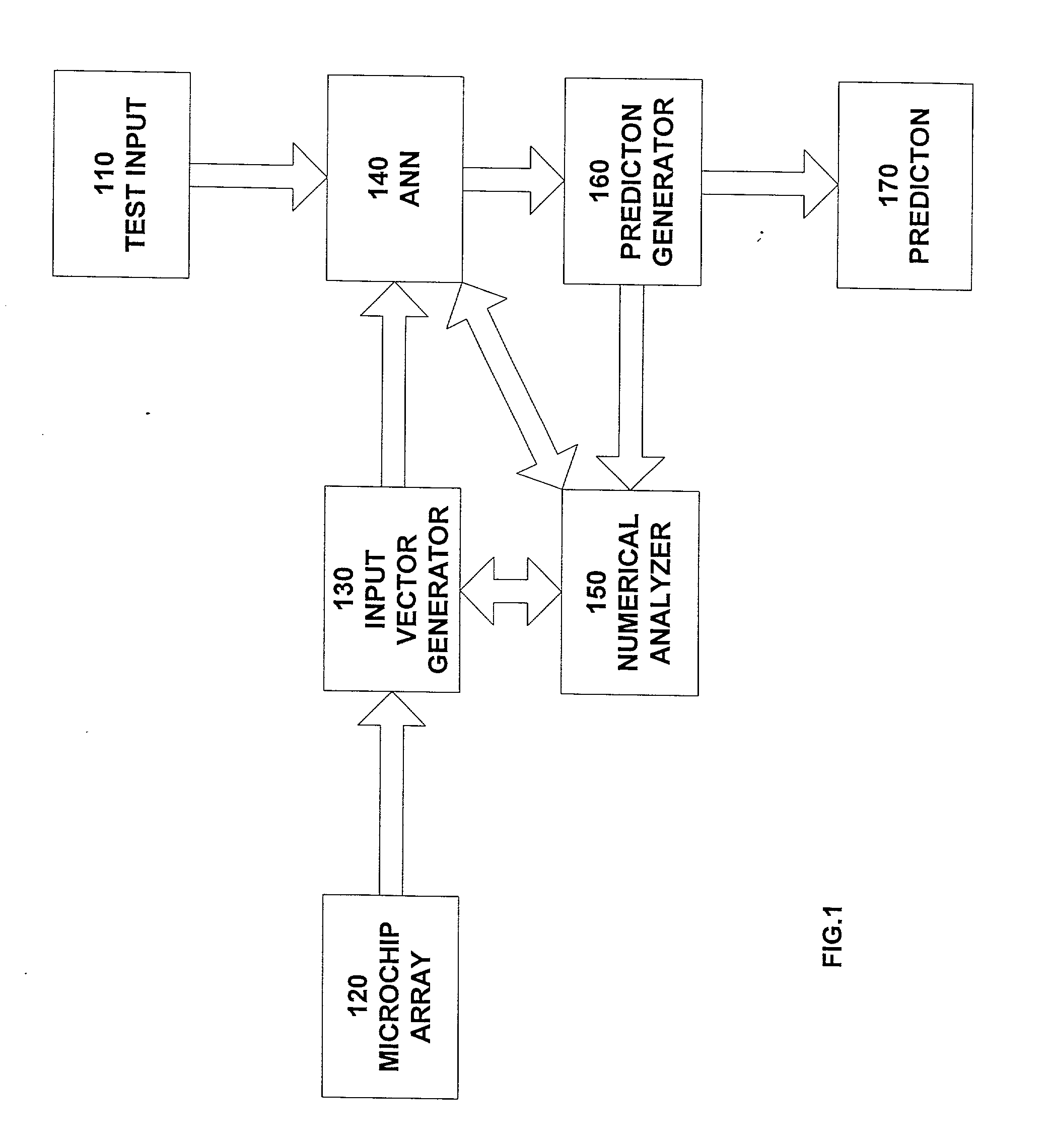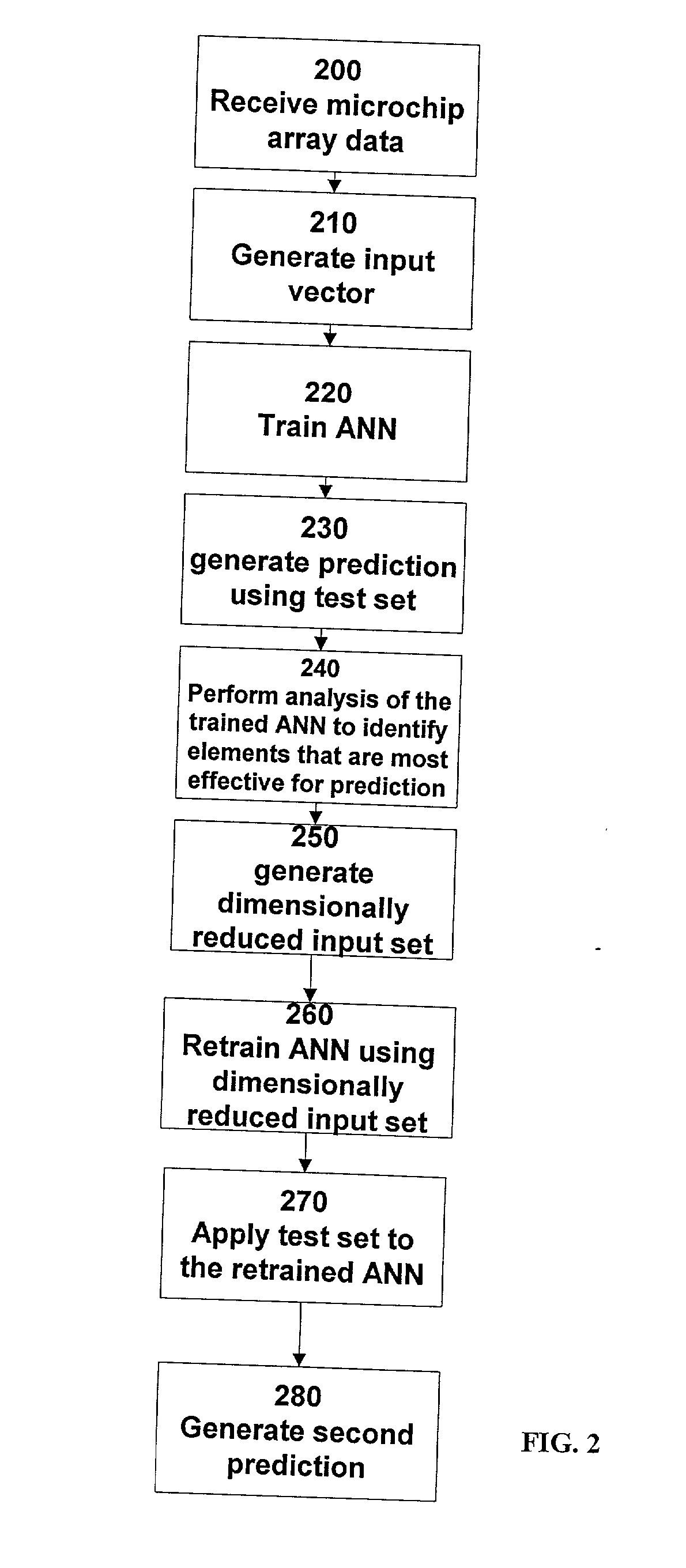System and method for using neural nets for analyzing micro-arrays
a neural net and microarray technology, applied in the field of microarray chips analysis using neural nets, can solve the problems of inability to predict which individual patients would survive, inability to identify core genes allowing correctness, and inability to identify core genes
- Summary
- Abstract
- Description
- Claims
- Application Information
AI Technical Summary
Benefits of technology
Problems solved by technology
Method used
Image
Examples
example implementation
[0045] IV.B. Example Implementation
[0046] FIG. 1 shows an example implementation of the disclosed system. The data from microarray experiments 120 are stored in spreadsheet form. This data represent the positive or negative level of expression, relative to some control state, of 1000's of genes for two or more experimental conditions. An input vector generator 130, which is a short software program translates this data directly into a binary representation suitable as input vectors for an ANN 140. The ANN is trained on the corresponding data sets, with a fraction of the data, typically 10%, withheld for testing purposes. All open fields in the data array are set to zero. The test input 110 is provided to the ANN. The ANN then classifies new test data as to donor type. A prediction generator 160 receives the input from the ANN and provides a prediction 170.
[0047] Since the gene expression levels are read directly from the spreadsheet, their order and names are provided by the spreads...
PUM
 Login to View More
Login to View More Abstract
Description
Claims
Application Information
 Login to View More
Login to View More - R&D
- Intellectual Property
- Life Sciences
- Materials
- Tech Scout
- Unparalleled Data Quality
- Higher Quality Content
- 60% Fewer Hallucinations
Browse by: Latest US Patents, China's latest patents, Technical Efficacy Thesaurus, Application Domain, Technology Topic, Popular Technical Reports.
© 2025 PatSnap. All rights reserved.Legal|Privacy policy|Modern Slavery Act Transparency Statement|Sitemap|About US| Contact US: help@patsnap.com



